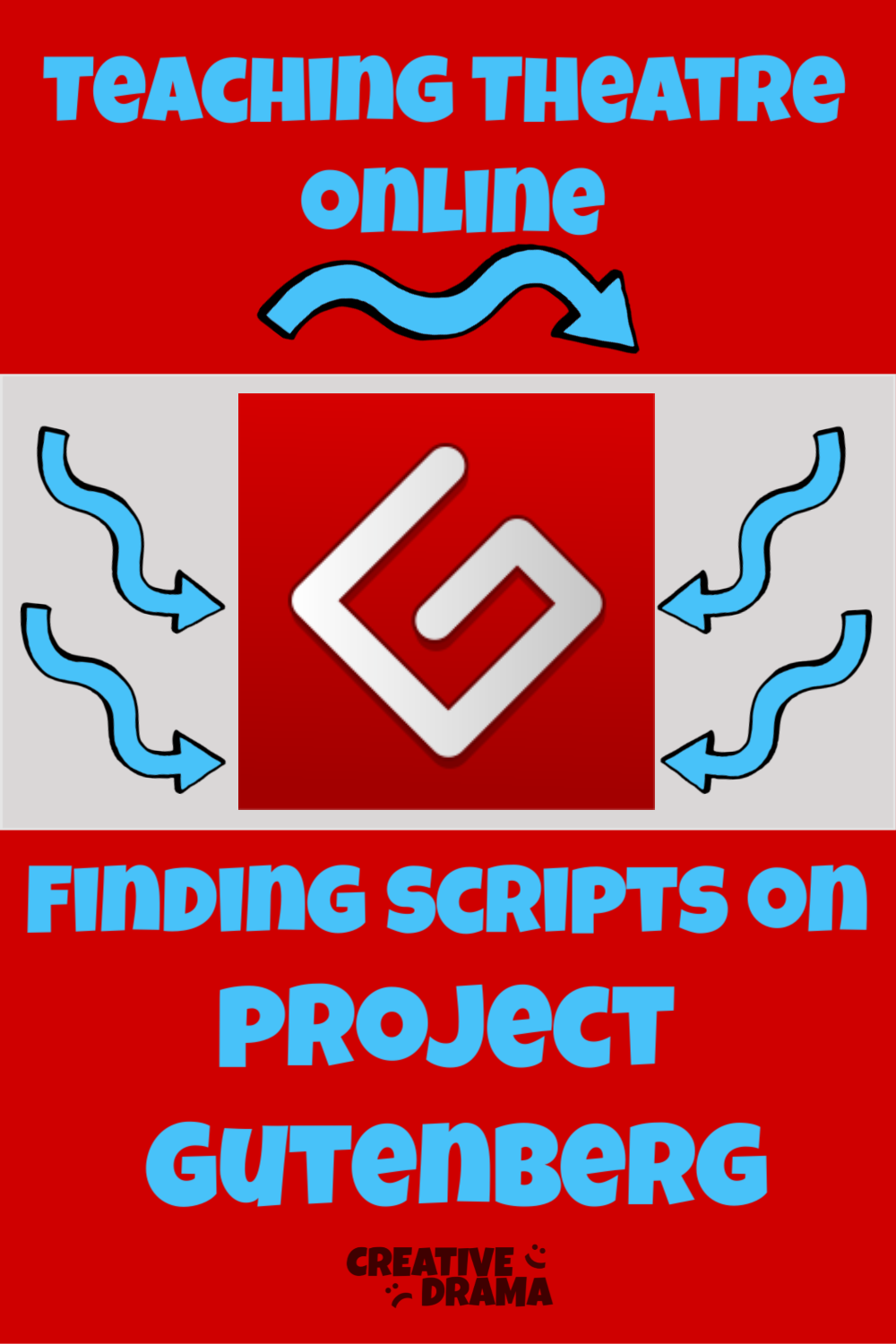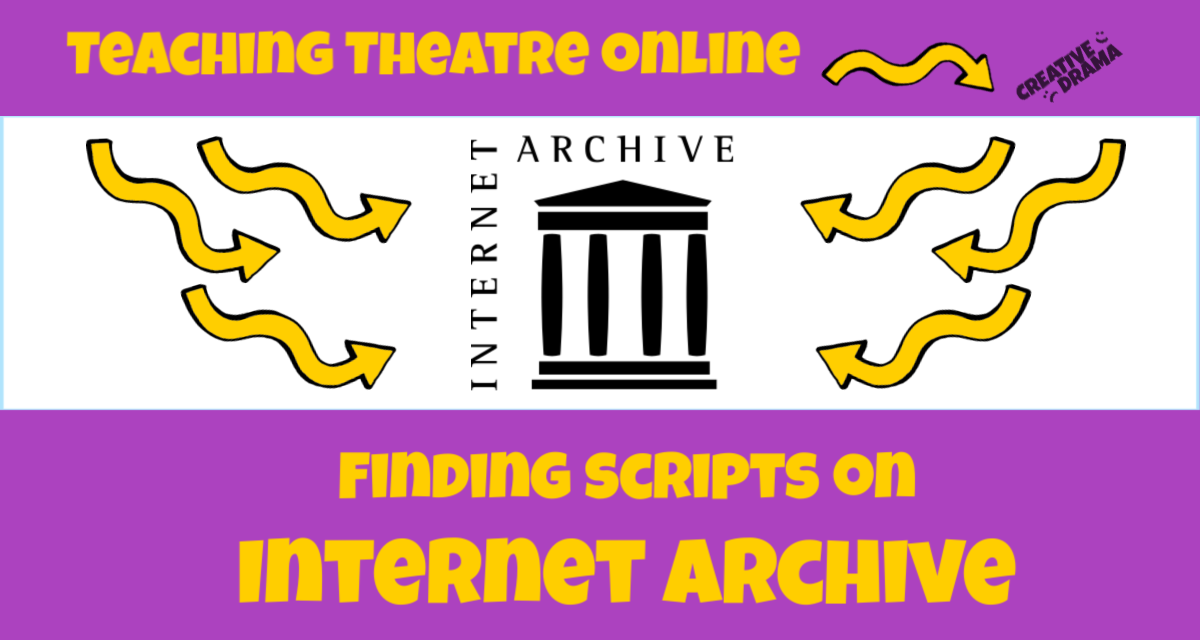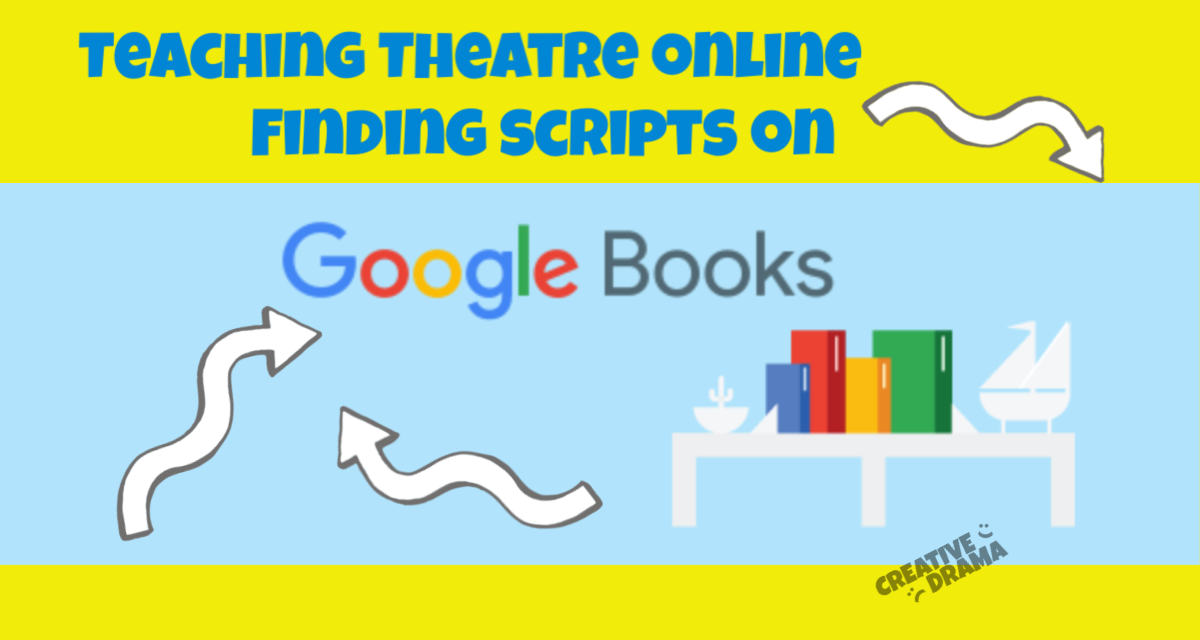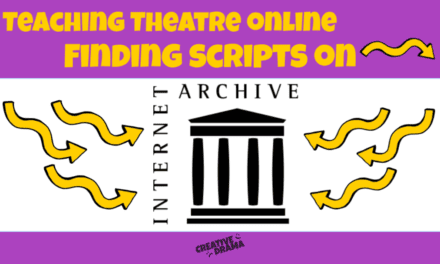Teaching Theater Online – Finding Scripts on Project Gutenberg
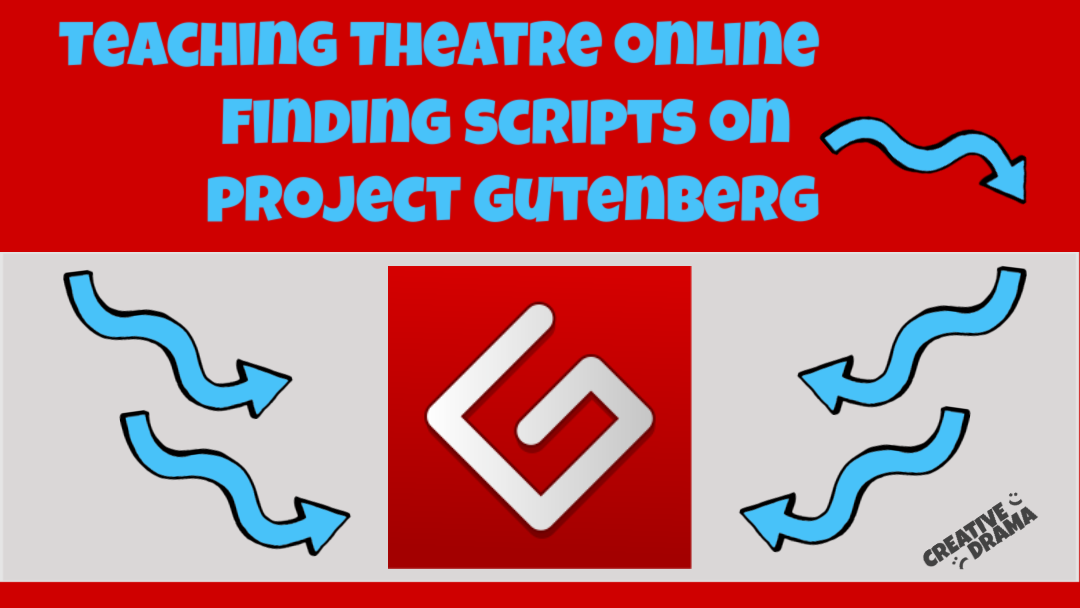
If you’re looking free and easily accessible scripts for your students to read or perform,
Project Gutenberg has hundreds of plays available.
The oldest digital library, Project Gutenberg first appeared on the ARPANET in 1971. Michael Stern Hart founded it; he and volunteers typed the first texts into computer files word by word. Project Gutenberg still utilizes volunteer proofreaders.
Nearly all of the works available on Project Gutenberg are in the public domain. Accordingly, texts on Project Gutenberg are freely available to read online or download in a variety of formats. Some even have ebook editions that you can read on tablets.
Searching for Plays on Project Gutenberg
Searching Project Gutenberg can be a little overwhelming at first. The Search page is uncomplicated, with just a search box. But if you want to narrow your results, you’ll need to reference the “Help” pop-up and use the prefixes and operators indicated.

Screenshot of the Project Gutenberg Search Function
The returns often have repeated titles, sometimes in various languages, and the subject headings can be confusing. Pygmalion, for example, is cross-referenced under “Flower Vending – Drama” as well as “Linguistics Teachers – Drama.” When you search for “drama,” you’ll be able to find nearly 900 Subject headings!
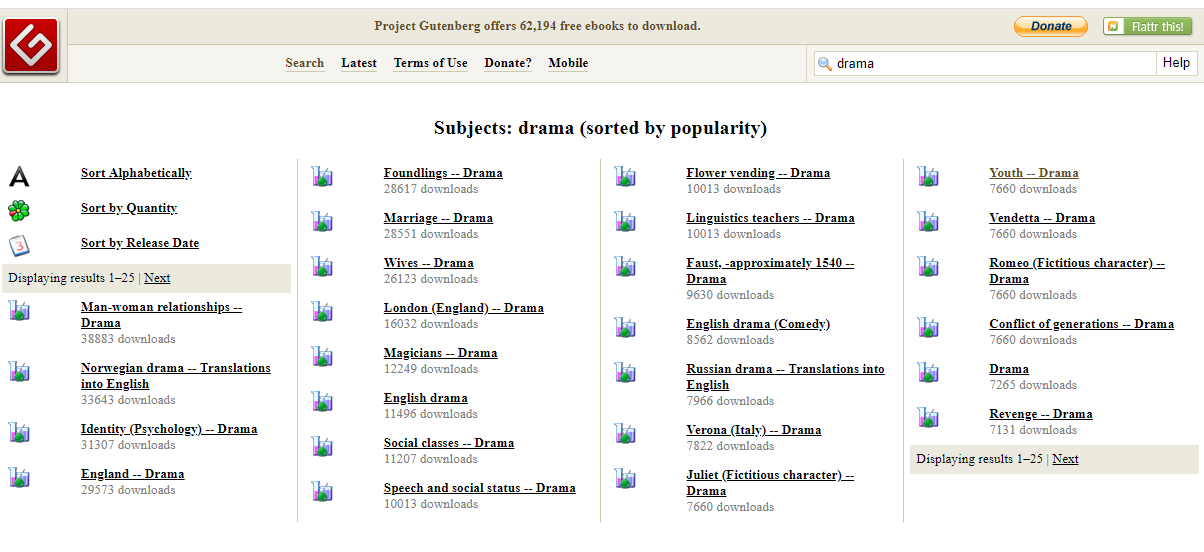
Screenshot of Project Gutenberg’s the first 25 Subject Areas for Drama
However, if you’re on a purposeful quest, there’s lots of public domain treasures on Project Gutenberg.
You can find many works by the following playwrights:
- George Bernard Shaw
- Anton Chekhov
- Christopher Marlowe
- Ben Jonson
- Richard Brinsley Sheridan
- William Congreve
- August Strindberg
And these well-known pieces:
- Karel Čapek’s R.U.R. (Rossum’s Universal Robots)
- The Importance of Being Earnest by Oscar Wilde
- The Frogs by Aristophanes
- William Congreve’s The Way of the World
Children’s Plays on Project Gutenberg
The subject heading link above has 26 titles, searching “plays for children” or “children’s plays” returns more results, but many of these aren’t children’s plays.
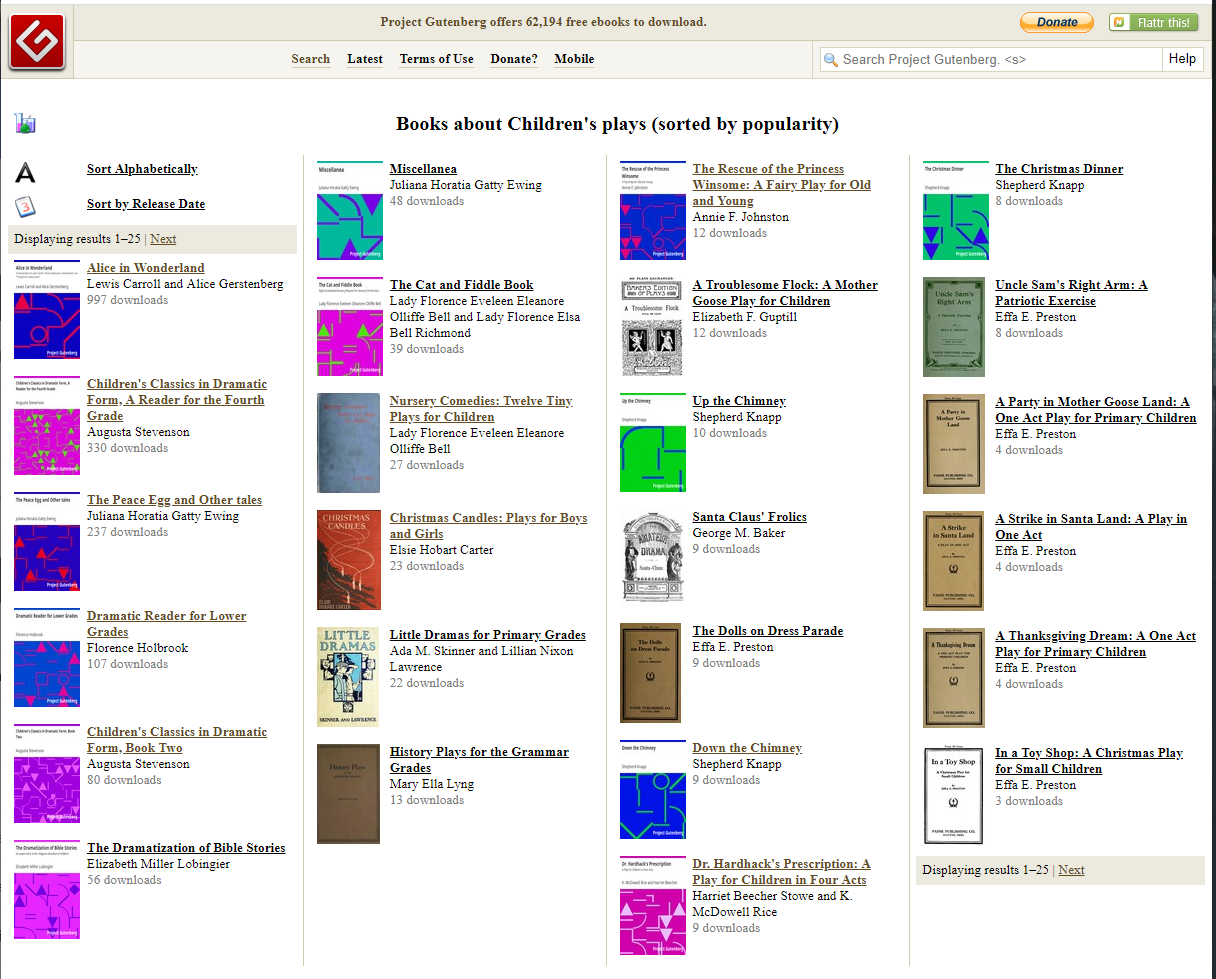
Project Gutenberg Children’s Plays Screenshot
The language in many of the children’s plays from the early 20th Century may seem unnatural and stilted to today’s readers. However, they are often charming pieces worth reading for historical context, or they could serve as the basis for a “modernization” assignment in a high school theatre class.
Here are some pieces and collections to check out:
Annie Fellows Johnston’s The Rescue of Princess Winsome
Augusta Stevenson’s Children’s Classics in Dramatic Form Stevenson’s book includes dramatizations from tales by Aesop, the Brothers Grimm, and Hans Christian Andersen
Stevenson also has a second volume of Children’s Classics in Dramatic Form
Nursery Comedies: Twelve Tiny Plays for Children by Lady Florence Eveleen Eleanore Bell
There’s a Christmas Mumming Play in Juliana Horatia Ewing’s book, The Peace Egg and Other Tales.
Lewis Carroll’s Alice in Wonderland dramatized by Alice Gerstenberg (Gerstenberg also wrote the classic plays Overtones and The Pot-Boiler.)
Dramatic Reader for the Lower Grades by Florence Holbrook has some obscure tales dramatized in addition to the well-known “Goldilocks” and “Little Red Riding-Hood.”
Little Dramas for Primary Grades by Lillian Nixon Lawrence and Ada M. Skinner contains over 30 pieces, some from other authors. Many are less than 5 minutes of performance.
Dr. Hardhack’s Prescription, adapted by K. MacDowell Rice from Harriet Beecher Stowe’s story, might be tough for younger students to “get,” but I think it’s ripe for a wry interpretation by high school students.
One of the interesting subject headings I found under “Plays” was Plays with Fairy Themes. There are several versions of A Midsummer Night’s Dream here, including one by George Colman that just features the Fairies and the Mechanicals .
You’ll also find:
The Land of Heart’s Desire by W.B. Yeats
Sanctuary: A Bird Masque by Percy MacKaye – There are AMAZING photographs of the original 1913 production in this edition; some are hand-colored. MacKaye wrote it for the dedication of the Meriden Bird Club’s sanctuary in New Hampshire. The sanctuary is still there – you can read about it here!
One-Act Plays on Project Gutenberg
There are over 100 one-act plays in this query result.
Project Gutenberg has useful anthologies of one-acts:
Roland Lewis, the editor of Contemporary One-Act Plays (1922) includes an “outline study of the one-act play” as well as four pages of suggested works. The 18-title collection has Barrie’s The Twelve-Pound Look, Lady Gregory’s Hyacinth Halley, and Strindberg’s The Stronger.
Fifty Contemporary One-Act Plays (1920), edited by Frank Shay and Pierre Loving, has plays from 16 countries and includes two plays originally written in Yiddish. The pieces I recognized include Susan Glaspell’s Trifles, Alice Gerstenberg’s The Pot Boiler, and Edna St. Vincent Milay’s Aria Da Capo.
One-Act Plays by Modern Authors (1921), edited by Helen Louise Cohen, includes Synge’s Riders to the Sea and The Maker of Dreams by Oliphant Down. There are several essays on the state of early 20th Century theatre preceding the plays.
The Atlantic Book of Modern Plays (1921), edited by Sterling Andrus Leonard, features “Notes on the Dramas and Dramatists” and a “Bibliography of Plays for Reading in High Schools” in addition to 15 short works by British and American playwrights of the late 19th and early 20th centuries.
Other Anthologies on Project Gutenberg
The Plays of Roswitha, translated by Christopher St. John (1923) contains 6 pieces by Hrotsvitha of Gandersheim, a 10th Century author. Hrotsvitha lived in a convent( though she did not take all the vows to become a nun); she’s notable for being one of the earliest credited playwrights in the Middle Ages.
A Collection of Old English Plays (1882-1889), edited by A.H. Bullen, has 4 volumes. The plays are old, and they are English, but not written in Old English! The volumes include pieces by some of Shakespeare’s contemporaries as well playwrights working in the years before the Interregnum.
If that’s not enough old and English plays for you, A Select Collection of Old English Plays has FIFTEEN volumes. The plays start in the 16th Century and progress in a fairly chronological order into the Restoration period.
Burlesque Plays and Poems (1885) includes Beaumont and Fletcher’s Knight of the Burning Pestle along with pieces that might work for oral interpretation or forensics competitions.
THIS POST IS PART OF THE TEACHING THEATRE ONLINE SERIES
